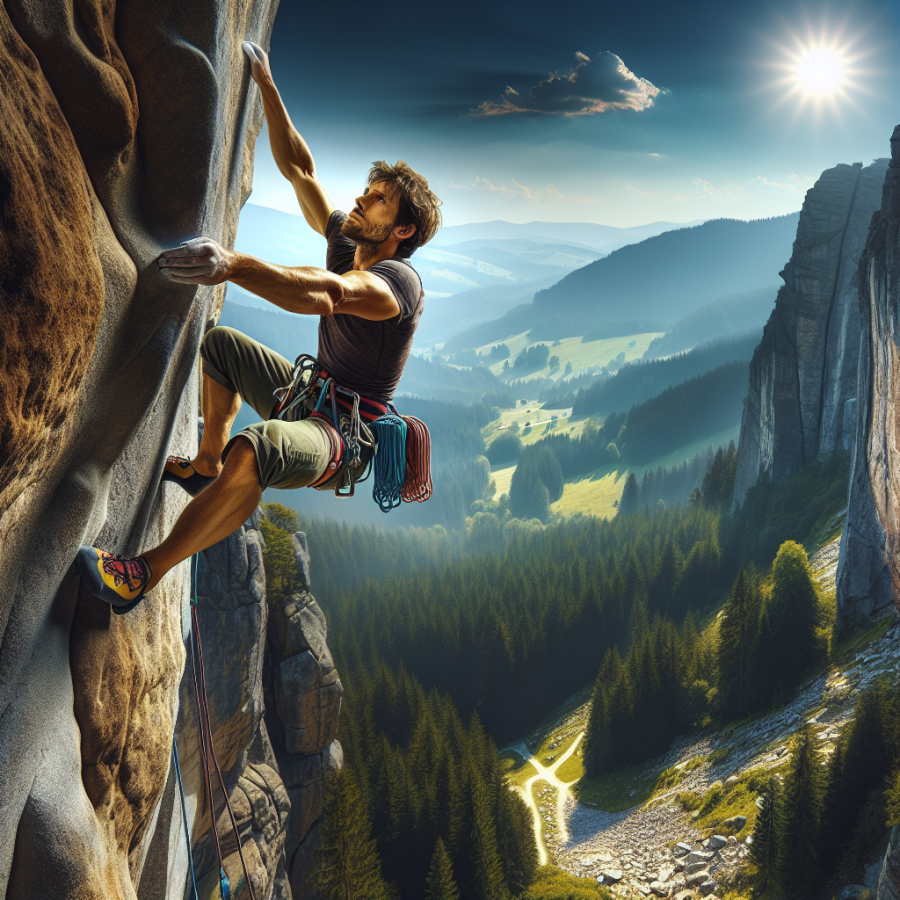Conquering Vertical Limits: Essential Gear for High-Altitude Adventures
Embarking on high-altitude adventures brings a bevy of unique challenges, not least of which is the daunting vertical terrain that tests both your physical endurance and mental fortitude. Scaling these impressive heights requires not only a climber's determination but also a specialized set of equipment that can mean the difference between a successful ascent and a harrowing experience. Here we will delve into the essential gear one must consider for conquering these vertical limits with confidence and safety.
**Climbing Harness:** Your lifeline on the rock face, a quality climbing harness provides a secure attachment point for your rope and gear. Look for a harness that offers comfort for long climbs, adjustable leg loops, and ample gear loops to carry your essentials.
**Climbing Shoes:** Precision and grip are pivotal when every foothold counts. Climbing shoes are designed with sticky rubber soles to maximize traction and sensitive toe areas to help you exploit even the smallest crevices.
**Helmet:** Rockfall is a constant danger in high-altitude environments, making a helmet a non-negotiable piece of equipment. A good helmet is lightweight, has ample ventilation, and provides coverage against falling debris.
**Rope:** The type of rope you choose should be tailored to your specific climbing activity. Dynamic ropes are crucial for absorbing the energy of a fall, whereas static ropes are better suited for rappelling and rescue scenarios.
**Carabiners and Quickdraws:** Secure attachment points for your rope are provided by carabiners, with quickdraws (two carabiners connected by a webbing sling) facilitating easy clipping and unclipping during lead climbs.
**Crampons and Ice Axes:** For ascents that involve snow and ice, these are indispensable. Crampons should be compatible with your boots, offering a secure fit, while the ice axe is necessary for gaining purchase on icy surfaces and self-arresting in the event of a slip.
**Ascenders and Descenders:** Mechanical devices like ascenders help climbers move up a rope with efficiency, while descenders allow for controlled lowering and rappelling down steep faces or to manage a heavy load.
**Protection Gear:** This category includes an array of devices such as nuts, camming devices, and hexes that climbers place in rock cracks to prevent a fall or to create an anchor point.
Read also:
Marn Grook: The Unseen Heritage of Australian Football
Harnessing Your Inner Strength: Techniques for Successful Ascents
Rock climbing presents a multitude of challenges that require not only physical capability but also a great deal of mental fortitude. To successfully scale new heights, climbers must develop techniques that harness their inner strength, allowing them to overcome fears, fatigue, and the unforeseen hurdles the sport often presents. In the realm of rock climbing, where mental barriers can be as daunting as physical ones, finding and nurturing your inner strength is paramount for successful ascents.
Visualization is a powerful technique climbers use to prepare for a climb. Before ever touching the rock face, many climbers close their eyes and mentally rehearse each move. This mental preparation helps to build a climber's confidence and reduces the fear of the unknown. They envision their hands and feet finding holds gracefully, the sensation of the rock beneath their fingers, and even the feelings of success they will have upon reaching the summit. By visualizing a positive outcome, climbers cultivate the mental resilience needed to face the challenge ahead.
Another key strategy is focused breathing. Controlled breathing not only helps to reduce stress and anxiety but also ensures that muscles receive the oxygen they need to perform optimally. A common practice is to use deep, diaphragmatic breathing both before and during the climb to maintain a calm and focused mindset. This type of breathing can help to keep clarity of thought even when fatigue sets in, enabling climbers to make well-considered decisions throughout their ascent.
Maintaining a strong mind-body connection is crucial for climbers attempting to harness their inner strength. Rock climbing requires acute body awareness; climbers must be keenly attuned to the signals their bodies are sending. This connection can be enhanced through practices like yoga, which increases flexibility, balance, and mental focus. The proprioceptive development that comes from such activities can be a major advantage when navigating complex routes.
Setting incremental goals is a powerful method for building inner strength during a climb. By breaking a route down into smaller, manageable sections, climbers can foster a sense of achievement and maintain motivation. Each small success builds momentum, helping to propel the climber to the next stage, and provides moments of respite to gather strength for the challenges ahead.
Creative problem-solving is a skill honed by experienced climbers. Each climb presents unique challenges, and oftentimes climbers must adapt their plan mid-route. This nimbleness of the mind is a testament to a climber's strength and agility, not just physically but also mentally.




